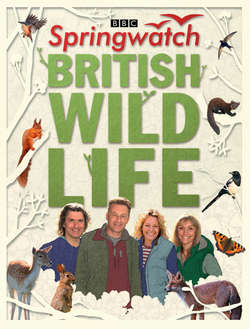Читать книгу Springwatch British Wildlife: Accompanies the BBC 2 TV series - Stephen Moss - Страница 21
ОглавлениеThe Oakwood Trio
©Derek Middleton/FLPA
©Neil Bowman/FLPA
The wood warbler and the redstart are typical summer visitors to oak woodland in western Britain.
These three beautiful birds of western oak woodlands are among the most sought-after and entrancing of all British breeding species. There is something magical about watching them as they hop about in the sunlit branches of oak trees, flashing their contrasting colours or singing their tuneful songs. Sadly, they are nothing like as common in the rest of Britain, though migrant birds do pass through southern and eastern counties during the spring and autumn, on their way to and from their breeding grounds in Scandinavia or Scotland.
All three are long-distance migrants, spending the winter months in sub-Saharan Africa. And like so many of these global travellers, they are experiencing problems: on their wintering grounds, at their stopover places en route, and even here in Britain. In addition, climate change has led to earlier and earlier springs, which means that when these birds arrive back here in the last fortnight of April, they may already be too late to coincide their breeding cycle with the emergence of the moth caterpillars and other insects with which they feed their young. Unless they are able to change their migratory habits and bring their arrival dates forward by two or even three weeks, they may well suffer population declines as a result.
The redstart is arguably the most handsome of the trio. This close relative of the robin is a slim, elegant bird with a long tail. The male is especially stunning, with a black and orange-red plumage and the red tail that gives the bird its name – ‘start’ means tail in Anglo-Saxon. The female is drabber in colour but also sports the brick-red tail.
The male pied flycatcher may lack the bright colours of the redstart but he is equally striking in appearance. His smart black-and-white plumage isn’t for our benefit, though: it is his secret weapon in the battle to win a mate. Female pied flycatchers may be rather dowdy – greyish-brown, where the male is jet-black – but they are the ones with the power in this relationship. Females check out the males not just for their song but also for the quality of their plumage – and the smartest, brightest males win the prize.
Of this western woodland trio, the wood warbler is by far the least known. Like its close relatives among the ‘leaf-warblers’, the willow warbler and chiffchaff, it hides away in the foliage of the tree canopy, its delicate lemon-yellow, pale green and white plumage blending in perfectly with the new spring leaves. But during the early part of the breeding season, from late April into May, it may be more visible as it sings its sweet and memorable song: a series of echoing whistles followed by a trill, in which the bird trembles its wings until they become a blur.
The wood warbler is also the odd one out in the place it chooses to nest. Whereas the redstart and pied flycatcher are, like so many woodland birds, hole-nesters, the wood warbler builds a delicate domed cup of grass, moss and leaves on the forest floor. Of the other two species, the pied flycatcher has taken most readily to nesting in artificial boxes; one of the best-known early studies of bird-breeding behaviour was carried out by ornithologist Bruce Campbell in the Forest of Dean, monitoring pied flycatchers in nest boxes, and this research continues to this day.
The redstart, too, was the subject of one of the earliest comprehensive studies of nesting behaviour, carried out under highly unusual circumstances. During World War II, the ornithologist, poet and Oxford academic John Buxton was incarcerated for five long years in a prisoner-of-war camp in the mountains of Bavaria in southern Germany. Casting around for something to alleviate the boredom, he and his fellow POWs began to watch a pair of redstarts nesting on the edge of the camp. By the end of that summer, they had amassed avast amount of information, based on almost constant observation of the nest. The information was later published in a charming and fascinating book, The Redstart, which appeared in 1950.
©Jan Van Arkel/Minden Pictures/FLPA
The female pied flycatcher, unlike the male, has a mainly brownish plumage.
